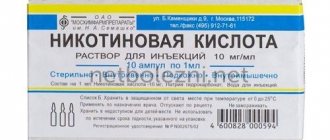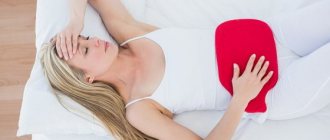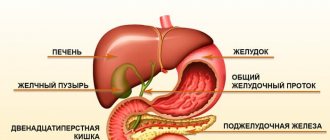Tranquilizers are classified as psychotropic drugs, since the main target of their action is the mental sphere and they are used to treat mental illnesses and painful conditions in healthy individuals. In addition to tranquilizers, psychotropic drugs include antipsychotics, antidepressants, mood stabilizers, nootropics and nervous system stimulants.
The first tranquilizer MEPROBOMAT
was synthesized in 1952. Thus, the history of the use of drugs in this group goes back more than 60 years.
Most drugs in this group, in addition to their sedative effect, have the ability to reduce muscle tension, make it easier to fall asleep, and stabilize autonomic reactions: palpitations, pressure surges, tremors, dizziness and headaches.
Tranquilizers
- a large group of drugs that are different in structure and mechanism of action, but what they have in common is a decrease in the excitability of the subcortical structures of the brain responsible for emotional reactions.
General restrictions for all drugs in this group are incompatibility with alcohol (they enhance each other’s effects), and prohibition on use by persons performing complex responsible actions that require increased concentration and instant reaction (drivers, pilots, machine operators, etc.) .
Depending on the chemical structure, tranquilizers are divided into several groups (according to M.D. Mashkovsky). List of tranquilizers by group:
BENZODIAZEPINES
One of the most common tranquilizers. They are widely used in the practice of psychiatrists, psychotherapists, psychiatrists - narcologists, neurologists, cardiologists, surgeons, anesthesiologists and resuscitators. With long-term use they can cause dependence (mental and physical). Benzodiazepine tranquilizers have a specific antagonist (a drug with the opposite effect) - FLUMAZENIL (anexate), which is used to stop breathing and loss of consciousness in cases of overdose and poisoning with benzodiazepines.
- Chlozepid (Librium, Radepur, Chlordiazepoxide, Elenium). The very first benzodiazepine tranquilizer with a strong sedative effect. Sibazon (Relanium, Relium, Seduxen, apaurin, diazepam).
- Bromodihydrochlorophenylbenzodiazepine (phenazepam, elzepam). Domestic development, widely distributed in the countries of the former USSR.
- Nozepam (tazepam, oxazepam).
- Lorazepam (calmese, loram, lorafen).
- Bromazepam (Lexilium).
- Mezapam (rudotel, medazepam).
- Gidazepam.
- Estazolam (nuctanol).
- Clorazepate (Tranxene).
- Clobazam (freesium).
- Alprazolam (Xanax, Zoldac, Neurol). One of the most powerful drugs in this group.
- Tetrazepam (myolostane).
- Tofisopam (Grandaxin). It is distinguished by its ability to have an activating effect.
List of tranquilizer drugs
In the international Anatomical Therapeutic Chemical Classification (ATC), adopted by the Ministry of Health of the Russian Federation in 2002, anxiolytics (N05B) are included in the subsection of the section Drugs for the treatment of diseases of the nervous system (N) - Psycholeptics (N05). This subsection includes six groups of tranquilizers:
- benzodiazepine derivatives (N05BA): Chlordiazepoxide, Medazepam, Oxazepam, Potassium clorazepate, Lorazepam, Adinazolam, Bromazepam, Clobazam, Ketazolam, Prazepam, Alprazolam, Galazepam, Pinazepam, Camazepam. Nordazepam, Fludiazepam, Ethyl loflazepate, Etizolam, Clotiazepam, Cloxazolam, Tofisopam, Lorazepam in combination with other drugs;
- diphenylmethane derivatives (N05BB): Hydroxyzine, Captodiam, Hydroxyzine in combination with other drugs;
- carbamates (N05BC): Meprobamate, Emilkamate, Mebutamate, Meprobamate in combination with other drugs;
- dibenzo-bicyclo-octadiene derivatives (N05BD): Benzoctamine;
- Azaspirodecanedione derivatives (N05BE): Buspirone;
- other anxiolytics (N05BX): Mefenoxalone, Gedocarnil, Etifoxine, Fabomotizol.
Below we present two lists of tranquilizers that can be prescribed for neuroses and neurosis-like mental disorders based on elements of the leading symptoms.
Rice. 1. Formula of the first tranquilizer.
Target - elements of agitation
Mild and borderline mental disorders may be accompanied by elements of agitation: anxiety, panic, fear, overvalued thoughts of fear, obsessive fears, irritability, dysphoria, difficulty going to bed, decreased sleep duration, vegetative lability, vegetative crises. Elements of agitation are the target of the following tranquilizers:
- Diazepam;
- Alprolasam;
- Phenazepam;
- Lorazepam;
- Clonazepam;
- Flurazepam;
- Medazepam;
- Oxazepam;
- Triazolam;
- Bratizolam;
- Tetrazepam;
- Clobazam;
- Gidazepam;
- Nitrazepam;
- Flunitrazepam.
Target - elements of asthenia
Elements of agitation in reversible mental disorders include: mental and physical asthenia, chronic fatigue syndrome, hypochondria, impaired attention and memory, decreased intellectual activity, weakness, fatigue, lethargy, apathy, exhaustion, irritable weakness, autonomic lability, lack of vigor after sleep, anxiety . If such symptoms are present, the following tranquilizers are effective:
- Adaptol;
- Noofen;
- Trioxazine;
- Tofisopam;
- Buspirone.
The choice of a particular tranquilizer depends on the therapeutic goals, the nature of the disease and the individual characteristics of the patient’s health condition. The same applies to the dosage and timing of taking drugs in this group. Refusal of the doctor’s recommendations for taking an anxiolytic (frequency of dosage, recommended dosage, timing of treatment) is unacceptable.
Use of tranquilizers
The main indications for taking these drugs are mild mental disorders and behavioral disorders:
- Neuroses. Neurosis-like conditions.
- Personality disorders.
- Anxiety disorders: panic attacks, phobias, generalized anxiety disorder, mixed anxiety and depressive disorder.
- Withdrawal state (withdrawal syndrome) with alcohol, nicotine, drug addiction, substance abuse and polydrug addiction.
- Depression with anxiety.
- Schizotypal disorder.
- Acute psychoses (in combination with other drugs).
- Consequences of organic damage to the central nervous system with mental disorders
- Behavioral disorders in children and adolescents.
- Insomnia.
- Eating disorders (anorexia, bulimia).
- Psychosomatic diseases: eczema, irritable bowel syndrome, “neurogenic bladder”, asthma attacks, hypertension and arrhythmia.
In addition, they are widely used in neurological practice: consequences of traumatic brain injuries, strokes with increased muscle tone, epilepsy, spinal osteochondrosis, etc. In therapeutic practice: functional disorders in the gastrointestinal tract, cardiovascular, urinary and other body systems.
Is it possible to take tranquilizers on your own without a doctor?
No. These are psychotropic drugs that have their own contraindications and limitations. Self-administration is life-threatening.
Can you buy tranquilizers without a prescription?
No. They are prescribed only on prescription by a doctor who has grounds for prescribing this drug. Two tranquilizers are prescribed on special strict reporting prescription forms (form 148 - 1/u - 88), these are sibazon and alprazolam.
What are the most powerful tranquilizers?
Sibazon and alprazolam.
What are daytime tranquilizers?
Since most tranquilizers tend to cause daytime sleepiness, drugs have been synthesized without this side effect. These include: gidazepam, clorazepate, tofisopam, hydroxyzine, mebicar.
What is the difference between tranquilizers and antidepressants? Do they have anything in common?
The difference between them is in the mechanisms of action (they act on different types of receptors). They have different therapeutic effects (anti-anxiety and antidepressant, respectively). Tranquilizers are often prescribed once or in short courses, antidepressants are prescribed for a long time, several months.
What they have in common is that they are all psychotropic drugs. Some drugs from these groups can give a hypnotic, sedative and anti-aggressive effect.
Side effects and contraindications
Despite the fact that some tranquilizers are sold in pharmacies without a prescription, their use must be regulated (both in dosage and course duration). Uncontrolled use inevitably causes side effects, including:
- daytime sleepiness;
- general lethargy, lack of tone;
- muscle weakness;
- poor concentration;
- memory impairment;
- decreased performance;
- slowness of mental reactions;
- anxiety;
- insomnia;
- psychomotor agitation;
- paradoxical reactions;
- urinary retention;
- decreased sexual desire;
- nausea, vomiting;
- constipation;
- hypotension (low blood pressure).
In addition, it is worth considering that there are a number of contraindications to taking tranquilizers, including:
- pregnancy (especially the first trimester);
- lactation period;
- psychoses;
- myasthenia gravis;
- eye diseases;
- renal failure;
- liver damage;
- individual intolerance to individual components;
- children, teenagers and old age.
A more complete list of contraindications can be found in the instructions for the specific drug. Often it consists of 1-2 dozen different positions. Therefore, before using even an over-the-counter product, you should consult your doctor.
pharmachologic effect
The vast majority of tranquilizers in one way or another activate the GABAergic system, enhancing the inhibitory effect of one of the mediators (signal transmitters) in the brain - gamma-aminobutyric acid (GABA).
Other anxiolytics reduce anxiety by activating serotonin 5-HT type 1A receptors.
A tranquilizing effect can also be achieved by blocking central histaminergic (H1) receptors.
Depending on the dose, almost all tranquilizers can cause sedative (in a low dose), anxiolytic and hypnotic (in a high dose) effects. In addition, certain tranquilizers reduce aggressiveness, lower muscle tone (relax muscles), and have an anticonvulsant effect.
The main effect of tranquilizers
Anxiolytics can have different effects, the severity of which varies between drugs. Some anxiolytics, for example, do not have a hypnotic or sedative effect.
In general, drugs in this group have the following effects:
- Anti-anxiety - reducing anxiety, fear, restlessness, eliminating obsessive thoughts and excessive suspiciousness.
- Sedative - a decrease in activity and excitability, accompanied by a decrease in concentration, lethargy, and drowsiness.
- Sleeping pills - increasing the depth and duration of sleep, accelerating its onset, primarily characteristic of benzodiazepines.
- relaxant - muscle relaxation, which manifests itself in weakness and lethargy. It is a positive factor in relieving stress, but can have a negative effect during work that requires physical activity, and even when working at a computer.
- Anticonvulsant - blocking the spread of epileptogenic activity.
In addition, some tranquilizers have a psychostimulating and antiphobic effect and can normalize the activity of the autonomic nervous system, but this is rather the exception than the rule.
The first tranquilizer, synthesized in 1952, was meprobamate. Anxiolytics were widely used in the 60s of the 20th century.
Classification of tranquilizers
There are several classifications of anxiolytics - according to their chemical structure, as well as the mechanism and duration of their action.
Based on their mechanism of action, tranquilizers that are widely used in clinical practice are divided into the following classes:
- GABAergic receptor type A agonists: carbamates (meprobamate);
- barbiturates (phenobarbital);
- benzodiazepine derivatives (diazepam, chlordiazepoxide, lorazepam, phenazepam, gidazepam);
- triazolobenzodiazepines (alprazolam);
Benzodiazepines are further classified by duration of action into drugs:
- long-acting (24-48 hours): diazepam, chlordiazepoxide;
- medium duration of action (6-24 hours): alprazolam, lorazepam;
- short-acting (up to 6 hours): gidazepam, phenazepam.
Additionally, tranquilizers are classified into “night” (cause a pronounced hypnotic effect - for example, diazepam) and “daytime” (do not have a hypnotic effect - for example, gidazepam).
In addition to tranquilizers, many psychoactive substances can have a calming effect and reduce anxiety. These drugs include antidepressants, some antipsychotics, as well as antiarrhythmic and antihypertensive drugs (for example, the β-blocker propranolol) and antihistamines and antiallergic drugs (for example, diphenhydramine).
Magnesium preparations also have a calming effect: magnesium lactate - for oral administration, magnesium sulfate - intramuscularly.
Are there non-drug treatments for depression?
In addition to medications, there are many non-drug treatments for depression. These are psychotherapy, biofeedback therapy, diet therapy, physical therapy, exercise therapy, reflexology, light and color therapy, sleep deprivation, etc. Most often, a combination of several methods is used to treat depression. For example: psychotherapy + drug treatment, biofeedback therapy + psychotherapy, medication + diet therapy, etc.
You cannot prescribe or use medications on your own. If you or your loved one is faced with the problem of depression, you need to see a psychiatrist or psychotherapist! Only according to his recommendations can you use drugs. Self-medication is life-threatening!
Consequences of using pharmaceutical drugs. Possible side effects
The consequences and side effects directly depend on what kind of “pharmacy drugs” the addict takes. Each group has an impressive list of side effects, including:
- vomiting and nausea;
- tremor of the upper and lower extremities;
- convulsions;
- a depressed state of consciousness, which in extreme cases can reach stupor and even coma;
- problems with cardiovascular activity;
- tachycardia;
- arrhythmia;
- sudden and uncontrolled changes in blood pressure;
- increased sweating, which may be accompanied by chills;
- panic attacks;
- hallucinations;
- loss of orientation in space and time;
- painful and persistent headaches;
- memory problems;
- excruciating pain in the abdomen and sternum.
If, when such symptoms appear, the patient is not provided with timely assistance, severe and extremely dangerous consequences may occur. Drug addicts who ignore the dangerous symptoms of drug abuse risk stroke, heart attack, respiratory arrest, seizures, pulmonary edema, kidney and liver failure.
With prolonged use of such narcotic substances, the personality is completely degraded, intellectual functions are greatly reduced.
“Pharmaceutical drugs” - what are they?
“Pharmaceutical drugs” mean a group of medications that can be freely purchased in pharmacies. You do not need to get a prescription from a doctor for this. This is their unofficial name. Some of these drugs turn out to be actually ready-to-use psychoactive substances that are used to obtain euphoria and pleasure. Others are purely raw materials for preparing illegal intoxicating mixtures at home. What they have in common is that they contribute to the development of addiction, which can only be gotten rid of after long and difficult treatment.
Consumers of illegal substances are attracted to these “pharmacy drugs” by their low cost, and they are much easier to obtain than illegal and harder drugs.
Pharmaceutical drugs available in pharmacies for free sale have the appropriate effect, even when taken in doses prescribed by doctors. If you start taking more than the daily dose specified in the instructions, there is a high risk of encountering dangerous and negative side reactions. The consequences can be dire, even death. In this case, each situation must be considered separately, taking into account the chemical composition of the drug, its individual characteristics and properties.
People who purchase these “pharmacy drugs” have different goals. This can be not only the desire to feel euphoria, but also to lose weight, relax, and stimulate intellectual activity. Among the narcotic drugs that are sold in pharmacies, the following varieties are found:
- opioids;
- painkillers;
- tranquilizers;
- antidepressants;
- sleeping pills,
- barbiturates;
- cough suppressants containing codeine;
- muscle relaxants;
- antihistamines;
- ophthalmic drops that help dilate the pupil.
For experienced drug addicts, such substances, when used correctly, are a replacement for their usual psychotropic drugs. Some drugs are mixed with substances that are purchased on the illegal market in order to enhance the effect, prolong the effect of the drug, and neutralize the negative consequences during the “coming off” period.
Among the users of such substances there are not only drug addicts who began by using illegal substances purchased on the black market, but also ordinary patients who developed an addiction during the time they were treated.
What is the difference between tranquilizers and antidepressants?
Antidepressants are psychotropic drugs that stimulate the nervous system, while tranquilizers are depressants. That is, antidepressants increase emotional activity and improve mood, and tranquilizers calm.
Three groups of tranquilizers
Sedatives are divided into 3 main groups (classification of tranquilizers):
Neuroleptics
or “major” tranquilizers, are antipsychotic drugs that are used mainly for schizophrenia and other severe mental illnesses accompanied by feelings of
- anxiety,
- fear
- and motor excitement.
Anxiolytics
(from the Latin “anxietas” - anxiety, fear, and the ancient Greek “λυτικός” - weakening), or “minor” tranquilizers - now they are most often understood as tranquilizers, and neuroleptics are no longer considered as such.
Sedatives -
drugs whose action is mainly aimed at
- inhibition of the nervous system
- and improved sleep quality.
In this article, by the term “tranquilizers” we will understand only drugs from the anxiolytic group, as is customary in modern medicine.







![Rice. 1. The main biologically active metabolites of arachidonic acid and enzymatic pathways for their formation (LOX - lipoxygenase) [2].](https://miass-medis.ru/wp-content/uploads/ris-1-osnovnye-biologicheski-aktivnye-metabolity-arahidonovoj-kisloty-i-fermentativnye-330x140.jpg)

